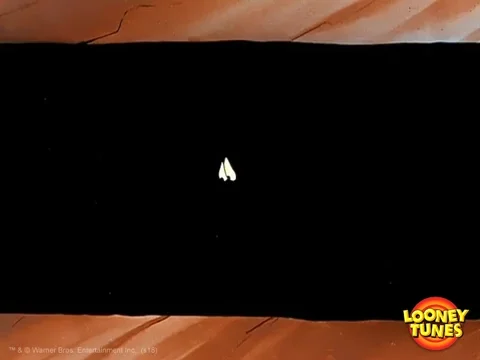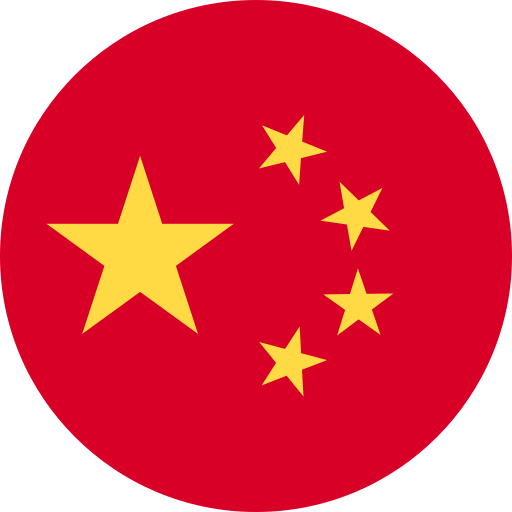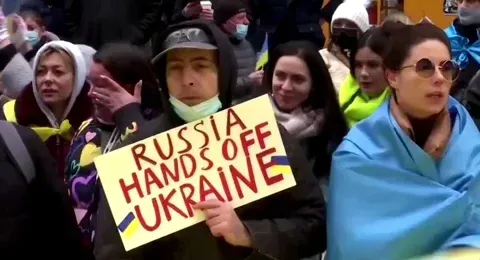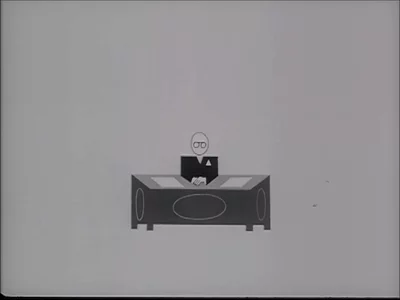Nuclear weapons...they pack a punch.
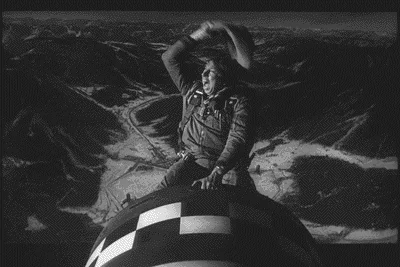
That's quite an understatement. They pack A LOT of punch.
Yet, their potential for destruction may be the very reason why they haven't been used since World War II. They're too powerful to be used like any other weapon.
This is why Bernard Brodie, one of the earliest thinkers on nuclear weapons, called the atomic bomb an "absolute weapon".
Another early thinker on these weapons, American diplomat George F. Kennan, had this to say:
To my mind, the nuclear bomb is the most useless weapon ever invented. It can be employed to no rational purpose. It is not even an effective defense against itself.”
But Russian President Vladimir Putin might think differently.

He's been prone to nuclear saber-rattling. And many worry Putin could be compelled to use nuclear weapons in Russia's war in Ukraine should red lines be crossed and he gets backed into a corner.
So then, how destructive must these weapons be if their use defies rationality?
And, if they can't be used, what's their point anyway?
Well, you better duck, cover, and scroll below because we answer these questions and more.
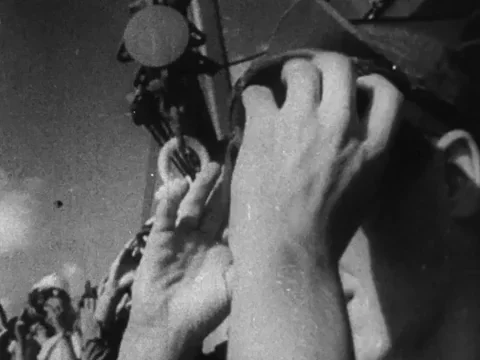
Q 1: What even is a nuclear weapon?
A: It's a device that triggers a large explosion through a nuclear reaction.
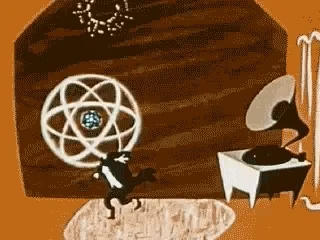 An atom is the building block of all matter. They comprise three particles—neutrons, protons, and electrons. The densest part of the atom is its nucleus, where neutrons and protons exist close together.
An atom is the building block of all matter. They comprise three particles—neutrons, protons, and electrons. The densest part of the atom is its nucleus, where neutrons and protons exist close together.
Nuclear reactions take place at the atomic level. An explosion is triggered in one of two ways.
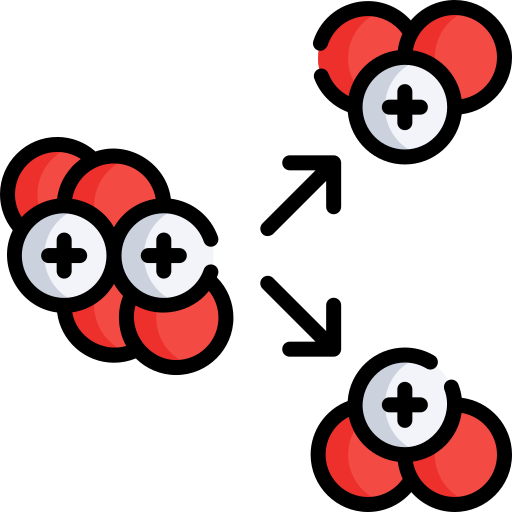 Fission
Fission
A fission reaction occurs when a neutron is shot through an atom's nucleus, splitting it in two.
The earliest atomic weapons, like those used at the end of World War II, were fission bombs.
 Fusion
Fusion
Energy is released in a fusion reaction when two nuclei are slammed together.
Most modern nuclear weapons use a combination of fission and fusion. In this process, a fission reaction ignites a fusion reaction.

Nuclear weapons have to be delivered to their targets. This can be done through missiles, bombs, and even artillery shells.
An intercontinental ballistic missile (ICBM)is the fastest way to deliver a nuclear weapon.
The Minuteman III ICBM has been a mainstay of America's nuclear triad since the 1960s. (What's the nuclear triad? We'll get to that later.)
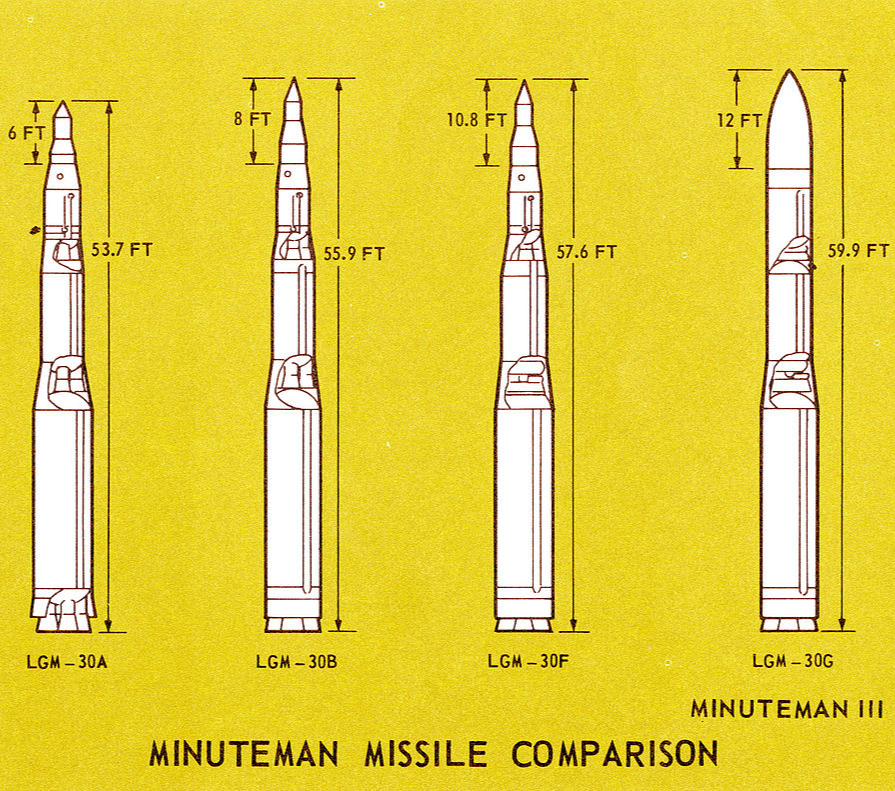
If you want to learn more about the science of an ICBM, you can check out this video.
But we can skip most of the techno-babbleand focus on the very top of the missile.

In a nuclear weapon, the warhead is the part that explodes. This is where the nuclear reaction takes place.
If a ballistic missile carries multiple warheads to different targets, they are called Multiple Independently Targetable Reentry Vehicles (MIRVs).
Russia and China are the only two countries that currently have MIRVed ICBMs.
Though the United States carried MIRVed Minuteman IIIs in the Cold War, these were removed during the Obama administration.
The United States, however, still carries MIRVed submarine-launched ballistic missiles (SLBM).
Q 2: What's the difference between tactical and strategic nuclear weapons?
A: While they're both nuclear weapons, the primary difference between them is their intended use.
If either were ever used in war, the effects would be significant.
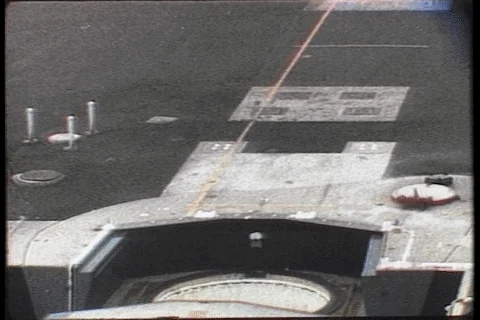
Strategic Nuclear Weapons
These are the most powerful nuclear weapons. They are called "strategic" because they target another country's ability to make war and sustain their society. Such targets could include an adversary's cities, economically and militarily important industries, and other nuclear weapons.
These weapons can be launched from three places and delivered in various ways. Each of these places is referred to as a leg. And together, they make up three legs of a "nuclear triad".

Think of a nuclear triad as a barstool. Each leg is needed for the seat to be held up. For countries that have a triad, each leg is believed to be required to give them a secure nuclear deterrent.
 Sea
Sea
This leg of the triad is comprised of nuclear weapons carried on submarine-launched cruise missiles or submarine-launched ballistic missiles
 Air
Air
Comprises nuclear weapons carried on aircraft like the B-52, B-1, and Stealth bombers. They can be dropped as a bomb or carried on cruise missiles.
 Land
Land
This leg of the triad is made up of ICBMs, like the Minuteman III. They're often launched from underground missile silos. But these weapons can also be carried on mobile platforms like trucks or other forms of transportation.
ICBMs have a long range. America's Minuteman III ICBMs have a range of more than 6,000 miles and can travel as fast as 15,000 miles per hour.
This leg of the triad is considered more dangerous than the others since ICBMs can be launched quickly and can't be recalled. They are also the most vulnerable to attack.
Tactical Nuclear Weapons
Tactical nuclear weapons would be used on the battlefield to achieve wartime objectives. These weapons have a shorter range, are less powerful than strategic nuclear weapons, and can take many forms — for instance, artillery shells and land mines.
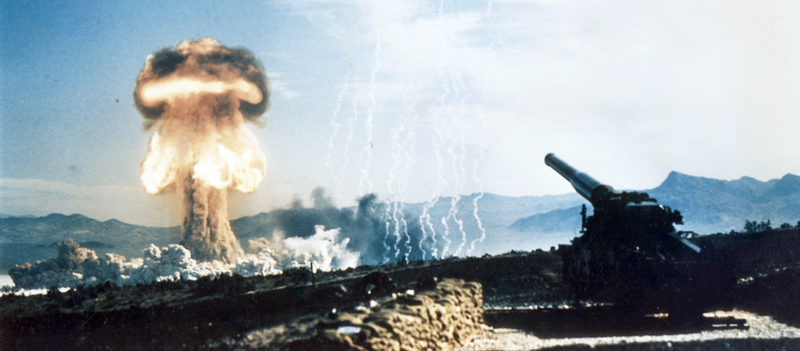
Unlike their strategic counterparts, no arms control treaties limit their deployment . This has given Russia room to build up its arsenal of tactical nuclear weapons and make them a key component of its military strategy.
It's estimated that Russia has between 1,000 - 2,000 tactical nuclear weapons stockpiled.
Some Western experts say Russia's nuclear strategy aims to "escalate to de-escalate",though there is debate if this is an accurate description.Moscow would use nuclear weapons in a conventional war to get the other side to back down or surrender.
Russia's large arsenal, however, shouldn't necessarily be seen as a source of strength.
Russia's conventional military is weaker than its main adversary, the North Atlantic Treaty Organization (NATO). Moscow makes up for this weakness by relying more on nuclear weapons.
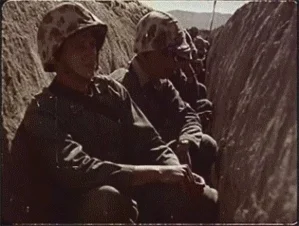
However, the tables were turned in the Cold War as NATO's conventional capabilities were inferior to that of the Soviet Union.
Though the United States deployed about 230 tactical nuclear weapons in 2022, it developed and deployed many tactical nuclear weapons in the Cold War.
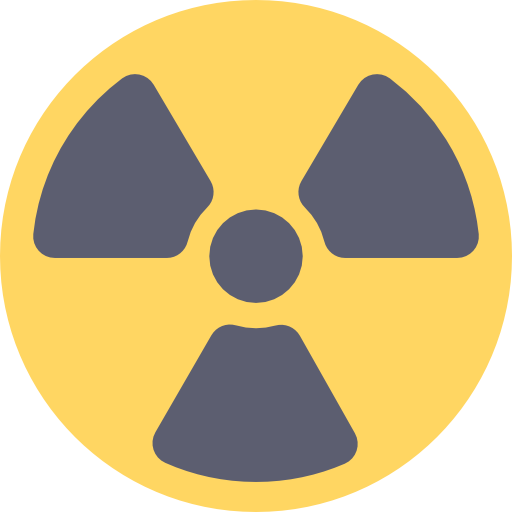 But it's important to remember: tactical nuclear weapons are still nuclear weapons.
But it's important to remember: tactical nuclear weapons are still nuclear weapons.
Many are more powerful than the bombs used on Hiroshima and Nagasaki at the end of World War II.
Although the word "tactical" implies these weapons can be used with precision, their use would endanger civilians and raise the risks that a conflict could escalate to a strategic nuclear exchange.
It's also debatable whether they'd help a country achieve meaningful objectives on the battlefield.
Q 3: So then, just how powerful are these weapons?
A: Let's do a little math.
A yield is the amount of energy released by a nuclear weapon when it explodes.
A yield is measured by the amount of TNT (a common explosive) needed to produce the same energy. This is sometimes measured in tons, but usually kilotons (KT) and megatons (MT).
The first bomb the United States used at the end of World War II — "Little Boy" — had an explosive yield of 15 KT. In other words, it was as powerful as 15,000 tons of TNT.
The second bomb dropped — "Fat Man" — had a yield of 21 KT or 21,000 tons of TNT.
The power of Little Boy was enough to level the Japanese city of Hiroshima. Early estimates said around 70,000 people were killed in Hiroshima, most within the first day of the blast. Later estimates placed the number much higher at about 140,000. But the effects lingered long after the explosion.
In comparison, the largest conventional explosive (that is, non-nuclear bomb) in America's current arsenal — which is referred to as the Mother of all Bombs (MOAB) — has a yield of 11 tons of TNT or 0.011 KT.
Though all are big, the size of nuclear weapons varies.
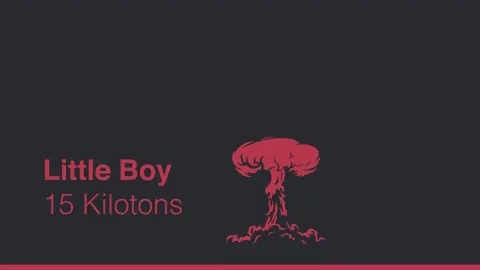
In the 1950s and 1960s, the United States and the Soviet Union raced against one another to build big weapons.
The USSR tested the largest nuclear weapon ever in 1961 — the Tsar Bomba. The explosion had a yield of at least 50 MT, which is the equivalent of 50 million tons of TNT.
This explosion was over 1,570 times more powerful than Little Boy and Fat Man combined.
The Tsar Bomba was designed to be even more powerful, with a 100 MT yield, though its full capability was never tested.
America's largest nuclear test occurred accidentally during the 1954 Castle Bravo test.
An H-bomb design unleashed a yield in the order of 15 MT. This was 2.5 times bigger than expected.
This is more than 1,000 times more powerful than Little Boy and Fat Man.
They also raced to build smaller weapons.
The smallest nuclear warhead ever deployed by the United States had a yield of just 10-20 tons of TN.
It was called the Davy Crockett, and it was so small that it could be fired from what was essentially a large rifle.
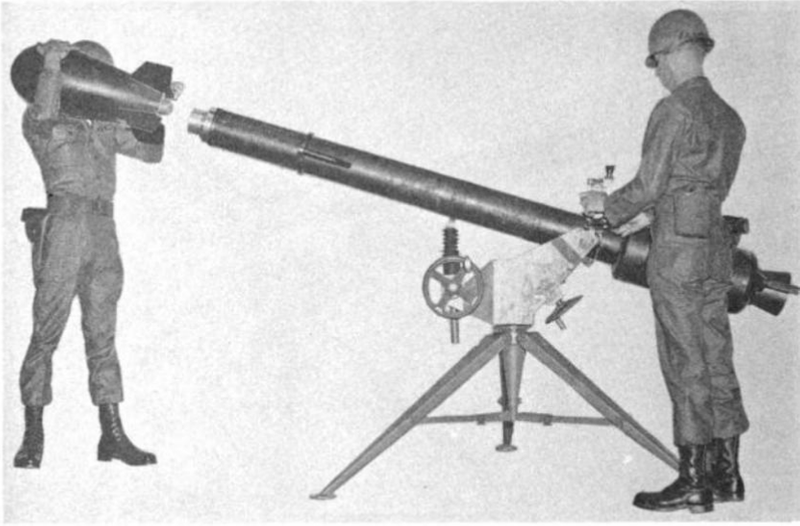
Today's nuclear weapons tend not to be as big as the largest tested during the height of the Cold War. But they're still very powerful.
Strategic warheads can have yields of 300 KT, 500 KT, 800 KT, and even 1 MT. Meanwhile, the yields of tactical nuclear weapons tend to range up to 100KT.
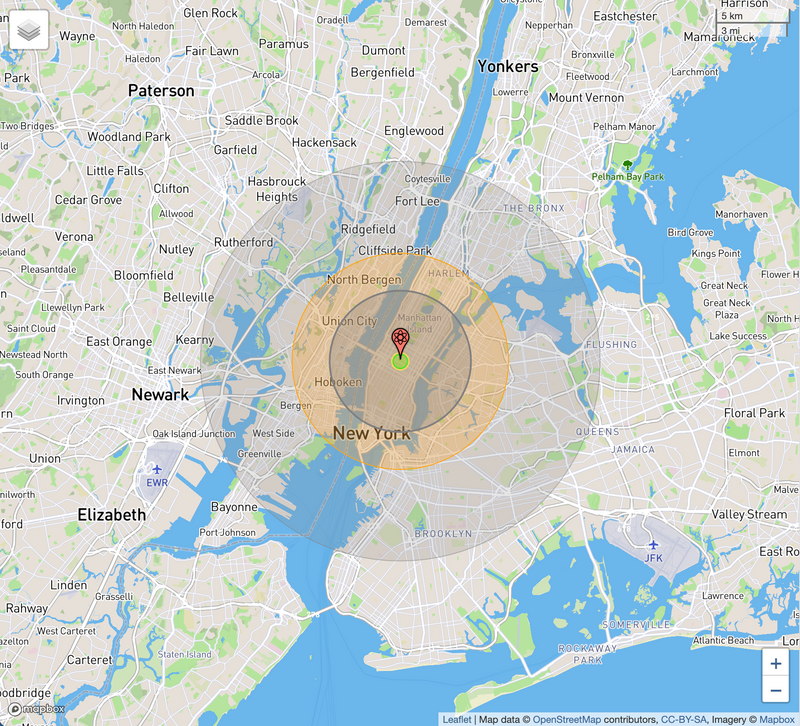 The Minuteman III can carry warheads with yields of 300 KT (pictured above) and 335 KT.
The Minuteman III can carry warheads with yields of 300 KT (pictured above) and 335 KT.
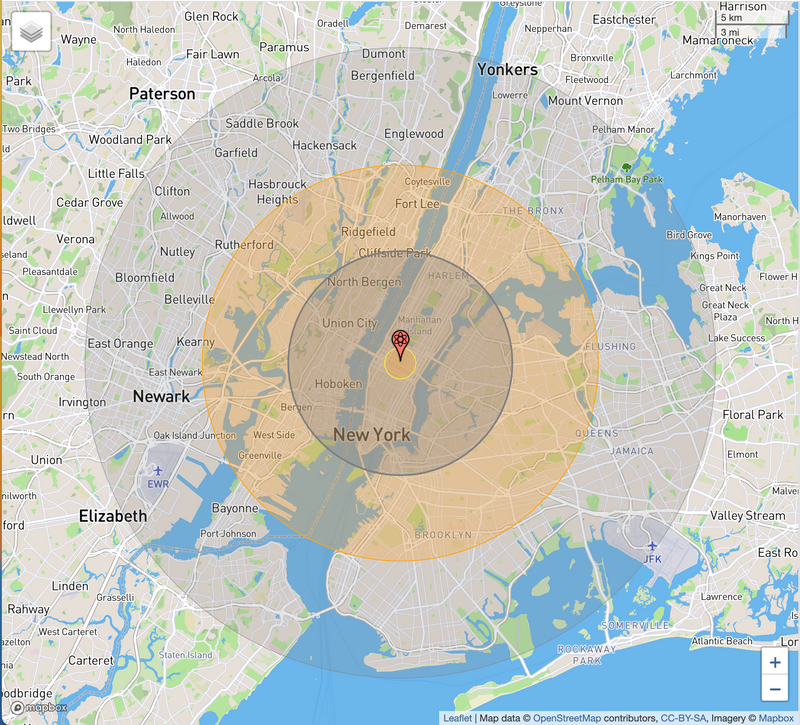 The largest bomb in America's arsenal, the B83 gravity bomb (pictured above), has a 1.2 MT yield.
The largest bomb in America's arsenal, the B83 gravity bomb (pictured above), has a 1.2 MT yield.
Above images courtesy of NUKEMAP by Alex Wellerstein: Map data © OpenStreetMap contributors, CC-BY-SA, Imagery © Mapbox
Though yields and math involving TNT are helpful ways to start understanding the destructive power of nuclear weapons, it can be easy to forget about the human impact these weapons would have.
Just one nuclear explosion could kill hundreds of thousands of people within minutes.
There's much more to a nuclear explosion and its effects. To learn more about the power of other nuclear weapons, past and present, you can check out NUKEMAP and hear from the website's creator on EGF's podcast, "None Of The Above."
Q 4: How many nuclear weapons are there?
A: There are 9 countries with nuclear weapons.
There are also many nuclear weapons. As of 2022, there are approximately 12,700 nuclear warheads worldwide.
These countries are the United States, Russia, the United Kingdom, France, China, Israel, India, Pakistan, and North Korea.

Many of their warheads are deployed, so they're ready to fly immediately. Other warheads are stockpiled and held in reserve, which could be put in the field later.
These countries' possession of nuclear weapons distinguishes them from the world's other nations. But even among countries with nuclear weapons, there are a few key differences.
Nuclear-Weapon States (NWS)
The Non-proliferation Treaty (NPT) recognizes only 5 countries as "nuclear-weapon states". This landmark treaty, which entered into force in 1970, allowed states with nuclear weapons at the time to keep them and prohibited its other signers from acquiring the bomb.
But there was a catch: nuclear-weapon states had to commit to working toward disarmament.
Here are those "privileged" few:
 United States
United States
America was the first country to acquire the bomb in 1945.
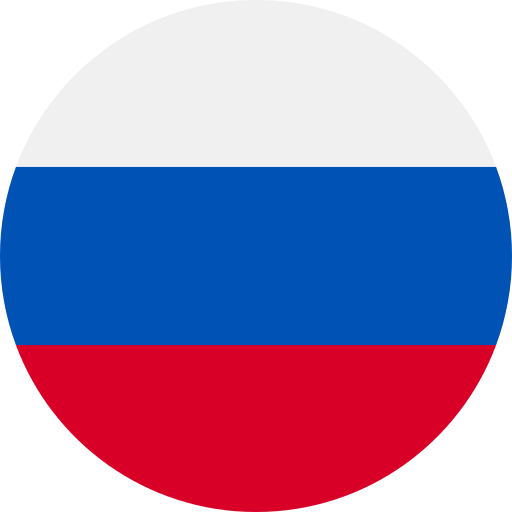 Russia
Russia
Russia (known at the time as the Soviet Union) came next. It successfully conducted its first test in 1949.
The nuclear histories of these two countries are intertwined as they competed to develop faster, more accurate, and more powerful weapons.
They possess most of the world's nuclear weapons today. Though Russia takes the lead with approximately 5,977 warheads, the US isn't far behind with 5,428 warheads.
Today, a third party has entered the mix.
China
Though China attained the bomb in 1964, it has only recently made a significant effort to expand its nuclear program dramatically. Even so, China currently only has roughly 350 warheads.
China's acquisition of the bomb raised alarm in the US, which feared other countries would soon follow suit. Later in the decade, the US and the Soviet Union negotiated the foundations of what would become the NPT.
 United Kingdom
United Kingdom
The UK assisted America in developing its first A-bomb during the Manhattan project.
The United Kingdom acquired its first nuclear weapon in 1952.It now has 225 warheads.
 France
France
France acquired its bomb in 1960 and currently has 290 warheads.
You may hear France's nuclear arsenal called the "force de frappe," which means "strike force."
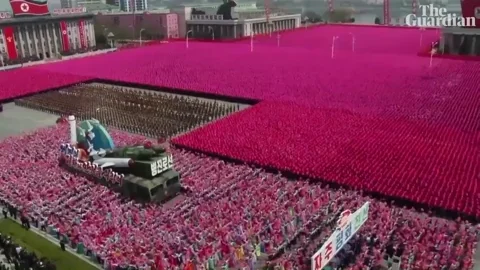
Other countries with nukes
🇮🇱 Israel has never officially confirmed or denied it has nuclear weapons. But it's believed they secretly acquired them in the 1960s and now have around 90 total warheads.
🇮🇳 India acquired the bomb in 1974. Its first nuclear test, "Smiling Budha," was called a "peaceful nuclear explosion." Today, India has around 160 warheads.
🇵🇰 Pakistan began its development of a bomb in the 1970s and tested its first nuclear bomb in 1998. Today, Pakistan has about 165 warheads.
🇰🇵 North Korea first tested a nuclear weapon in 2006. It's believed they have around 20 warheads. So far, the United States and the world have been unsuccessful in getting the North to give up its weapons.
Israel, India, Pakistan, and North Korea aren't members of the Non-proliferation Treaty. Therefore, the treaty doesn't recognize them as nuclear weapon states. North Korea was once a member but has since withdrawn.
Q 5: Why don’t more countries have nuclear weapons?
A: There are several cases of countries that once had nuclear weapons that no longer do.
South Africa is one example of a country that willingly gave them up.

The former Soviet Republics are another case. When the Soviet Union collapsed, three countries inherited the USSR's nuclear weapons along with Russia: Belarus, Kazakhstan, and Ukraine.



Amid the turmoil, many feared the prospect of three new nuclear-armed countries and "loose nukes" in the former Soviet Union, which could get into the hands of terrorists and criminals.
The United States spearheaded an international effort to return these weapons to Moscow peacefully.
The case of Ukraine has been much discussed recently. Ukraine inherited around 1,900 strategic nuclear warheads.
Had Ukraine not given them up, would Russia have invaded?
This might be the wrong question to ask. Ukraine may have had nuclear weapons on its territory, but it didn't control the mechanisms to launch them (those were in Moscow), nor did Ukraine have the technical ability to maintain them on hand.
It would've been very costly for what was then a cash-strapped nation to develop this ability.
There's even a possibility that war with Russia could have come earlier had Ukraine decided to keep them.
There could also be more nuclear-armed countries and conflicts just over the horizon.
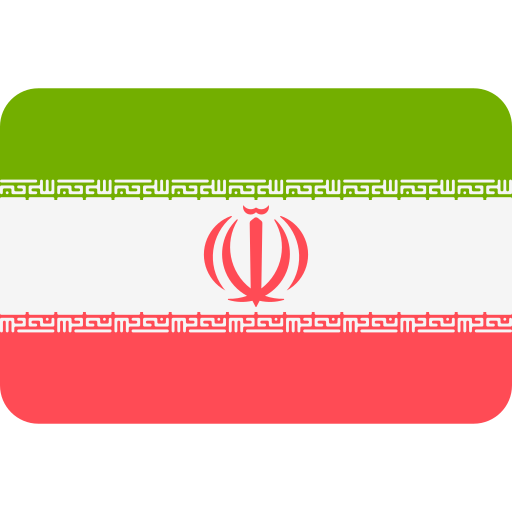 Iran
Iran
Iran has never had a nuclear weapon, nor does it have one now. But this isn't to say it couldn't quickly build one if it wanted to. Iran is just shy of enriching weapons-grade uranium.
A nuclear Iran is a worrisome prospect for many countries. It could threaten stability in the Middle East and unleash an arms race in the region.
This is why the European Unionand the five countries on the UN Security Council brokered the 2015 Iran nuclear deal.

Also known as the Joint Comprehensive Plan of Action (JCPOA), this deal put guardrails on Iran's nuclear program in exchange for relief from economic sanctions.
Though experts say Iran had followed through on the deal, the US left the agreement under the Trump administration.
Negotiations have been underway to restore the deal. But they haven't been easy and have since stalled amid protests in Iran.
Russia's Invasion of Ukraine
Russia's invasion of Ukraine has highlighted the vulnerability of countries without nuclear weapons to aggression by neighbors who do.
Many fear that the war, and the prospect of nuclear weapons use, could lead to nuclear proliferation.
 South Korea
South Korea
This may be one country that's taking note.
South Korea's nuclear-armed neighbor, North Korea, brandishes its nuclear arsenal and levies nuclear threats. Not to mention that South Korea also resides in a region where China has become more assertive.
Within South Korea, there are rumblings that its security could benefit from nuclear weapons. Opinion polls show the idea is popular in South Korea.
Q 6: Should we be worried about nuclear proliferation?
A: While it will always be a risk as long as there are nuclear weapons, there are good reasons why countries might think twice about getting them.
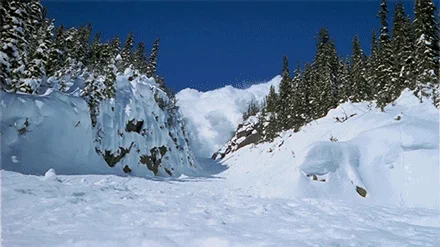
I can see the possibility…of a world in which 15 or 20 or 25 nations may have these [nuclear] weapons. I regard that as the greatest possible danger and hazard.
— US President John F. Kennedy, 1963
Many have predicted that there would be "cascades" — or avalanches — of nuclear proliferation. JFK's fears have, fortunately, never come to pass.
In this article, nuclear weapons expert Nicholas Miller provides several reasons why nuclear weapons haven't spread far and wide.
Here are several of them:
 Security Guarantees
Security Guarantees
Countries in dangerous neighborhoods can have the protection that comes with having nuclear weapons without actually having the weapons themselves. Extended deterrence comes as an alliance or partnership with a nuclear-armed country.
Take the US, for example. One crucial aspect of its alliance system is its nonproliferation benefits. Beyond France and the UK, other countries in NATO haven't needed to develop nuclear weapons because their security is tied to America's.
Despite concerns that South Korea may be considering getting the bomb, they sit under America's nuclear umbrella.
 Arms Control and Non-proliferation
Arms Control and Non-proliferation
The international community has spent much time and attention on preventing nuclear proliferation. This includes treaties and agreements, sanctions, threats, and the use of force.
All of these taken together make it very costly for states that attempt to acquire the bomb.
Even countries that are bitter rivals have found a common cause to prevent others from acquiring the bomb. In the 1960s, the Soviet Union and the United States came together to lay the foundations of the Non-proliferation Treaty.
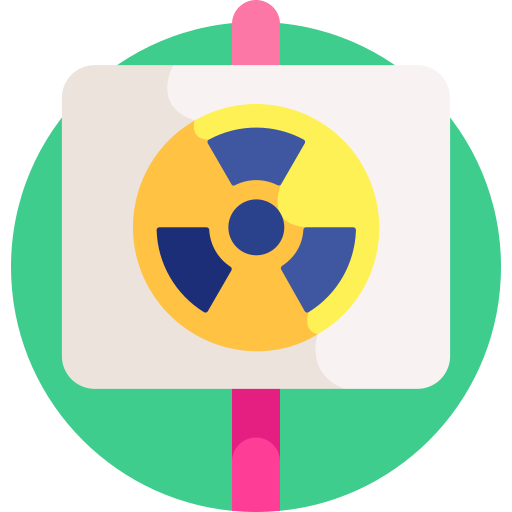 Issues at Home
Issues at Home
Though the knowledge is out there for any country that wants to make a nuclear device to make one, nuclear programs are costly and can be prone to mismanagement. Different governmental organizations and nuclear scientists competing for influence can impede efforts.
Wannabe nuclear weapons states may also face strong opposition at home.
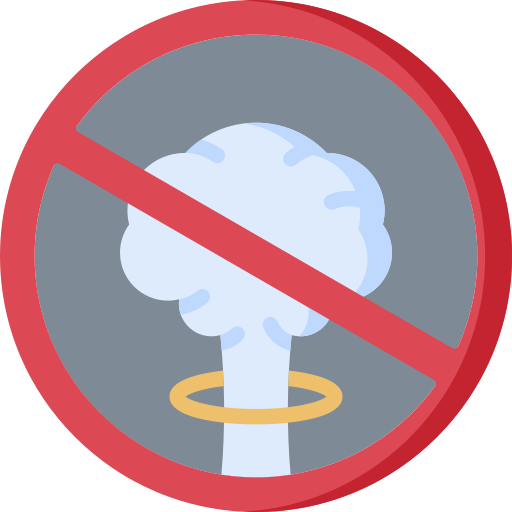 Nuclear Taboo
Nuclear Taboo
Nuclear weapons have only been used twice, and never since 1945. People and countries around the world may have internalized the horrors of the use of these destructive weapons.
These norms run deep and present barriers to entry. But they may be fraying.
Q 7: So what are nuclear weapons good for anyways?
A. They may do some things better than others.
While nuclear weapons may have little use on the battlefield, they do provide states who have them with a sense of security.
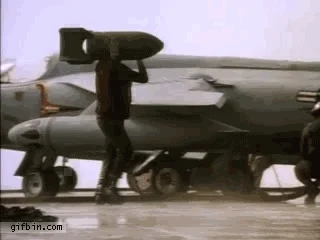 Deterrence
Deterrence
Deterrence means using the threat of nuclear force to prevent an adversary from doing something you don't want them to do.
Nuclear deterrence is seen to shape the behavior of nuclear-armed states in two ways:
➡️ Nuclear deterrence is often credited as the reason nuclear-armed countries haven't used their nuclear weapons against one another.
➡️ Nuclear deterrence is also credited for preventing major wars between nuclear-armed states, since fighting with regular weapons could escalate to fighting with nuclear weapons.
Deterrence may be one of the strongest motivations for countries to build nuclear weapons.
➡️ A state in a dangerous neighborhood may feel it's in its best interest to have nuclear weapons to make its neighbors think twice before attacking.
➡️ Nuclear weapons may be desirable to protect against nuclear blackmail from other nuclear-armed countries.
➡️ Unsavory leaders and authoritarian regimes may seek nuclear weapons to ensure their survival.
North Korean leader Kim Jong Un surely noted what happened to Lybian dictator Muammar Gaddafi, who gave up his nuclear weapons program and was later deposed.
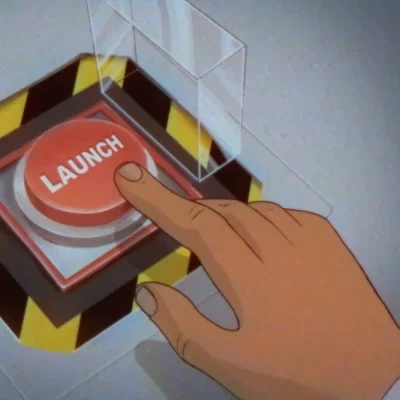
Some argue nuclear weapons make the world safer, as the destruction unleashed in a nuclear war would be too catastrophic.
The Cold War is sometimes called the "Long Peace" due, in part, to nuclear weapons.
World War III may not have occurred because the US and the Soviet Union entered a condition called mutually assured destruction.
According to this theory, the Cold War arms race reached a stalemate. Both sides had enough nuclear weapons to survive a first strike. If one nation dared to strike, they'd face destruction in a devastating counterattack.
How much deterrence is enough?
For deterrence to work, one side has to make it clear to the other side that if they strike first, they'll face retaliation.
The strategies and nuclear forces needed to achieve this is subject to debate. In general, the many different arguments fall into two camps:
 Minimal Deterrence
Minimal Deterrence
This view holds that an effective nuclear deterrent doesn't require too much.
If one country has enough weapons to survive an initial nuclear attack, the other country will think twice about using its nukes.
This view holds that the best targets are an adversary's cities. While this sounds immoral, nuclear weapons are less likely to be used because the consequence would be so catastrophic.
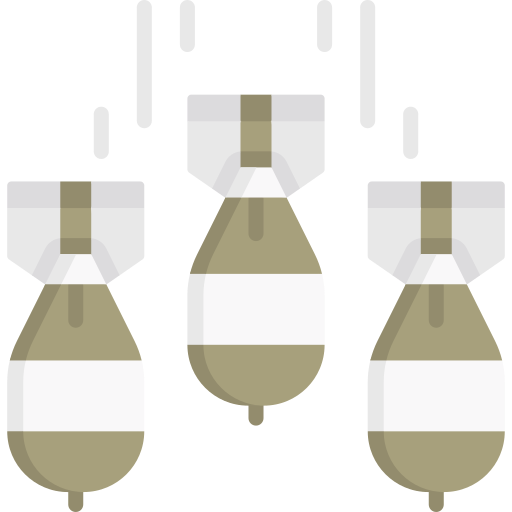 Maximum Deterrence
Maximum Deterrence
This view holds that deterrence is much less stable. A country's nuclear weapons can quickly become vulnerable.
More nukes, delivered in various ways, are better for deterrence.
This view holds that nuclear weapons should be treated more or less like other weapons of war. Instead of targeting cities, an adversary's other nuclear weapons are targeted to mitigate the destruction unleashed by their response.

Nuclear weapons also haven't necessarily made the world more peaceful.
Nuclear weapons may embolden those with them to behave more aggressively against states that don't have them — for instance, the current war in Ukraine.
Non-nuclear countries have even picked fights with nuclear-armed countries. Just look at Argentina during the Falklands War.
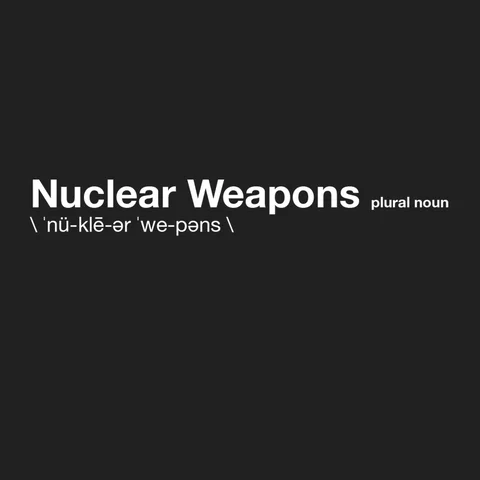
Seeking to avoid direct confrontation with one another, nuclear powers may also be incentivized to enlist proxies to fight for them.
Think of the Vietnam War and the Soviet Union's war in Afghanistan. In Vietnam, the Soviets supported the side the United States was fighting, and in the Soviet invasion of Afghanistan, the United States supported the side the Soviets were fighting.
While a catastrophic war between the United States and the Soviet Union never broke out, their competition for influence in the Third World was a bloody affair.
Fighting has also taken place between nuclear-armed countries: between China and the Soviet Union, and also between Pakistan and India. In both cases, border disputes erupted in fighting.
The idea that nuclear deterrence works is convincing.
But it's important to note that strategists and scholars who study nuclear weapons have a tricky job: they (fortunately) have little evidence of nuclear use to work with.
They also have to spend much time in the archives to see how nuclear weapons shaped the thoughts and decisions of policy-makers. Other important factors may also explain nuclear non-use, like the nuclear taboo.
Compellence
Compellence means using the threat of nuclear force to change an adversary's behavior or to get them to give something up.
Some think nuclear weapons are good for more than just deterrence. Some argue that countries can successfully threaten to use nuclear weapons to get an adversary to do what they want.
When threatening a nuclear-armed adversary, it might be helpful to have more (in fact many more) nuclear weapons than they do.
But it's unclear if a country's nuclear blackmail can be taken seriously. The use of nuclear weapons would be so tremendous that threats are unlikely to be taken seriously unless a dispute is over something of supreme national importance.
Status
Nuclear weapons are a source of prestige. Any state with these weapons must be reckoned with and taken seriously.
Nuclear weapons can lift a country to great power status or allow them to keep this status longer than it otherwise would.
➡️ When China and India acquired their bomb, it showed the world that developing countries could get a seat at the table.
➡️ Despite its economic and military challenges, nuclear weapons have helped the United Kingdom to punch above its weight.
Countries have also found it hypocritical that the Non-proliferation Treaty created two classes of states: those with nuclear weapons and those without them.
Officials and planners in nuclear weapon states have worried that their failure to disarm could encourage other countries to withdraw from the treaty and even pursue nuclear weapons.
Take Action
World leaders have had different perspectives on nuclear weapons over the years. Many recoiled from the thought of ever having to use them, even if they soberly recognized their importance in the nuclear age.
Every man, woman and child lives under a nuclear sword of Damocles, hanging by the slenderest of threads, capable of being cut at any moment by accident or miscalculation or by madness. The weapons of war must be abolished before they abolish us.
— John F. Kennedy, 1961
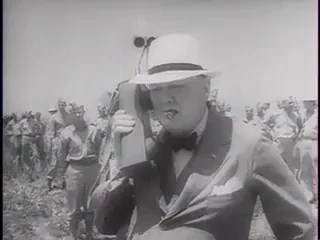
Safety will be the sturdy child of terror, and survival the twin brother of annihilation.
— Winston Churchill, 1955
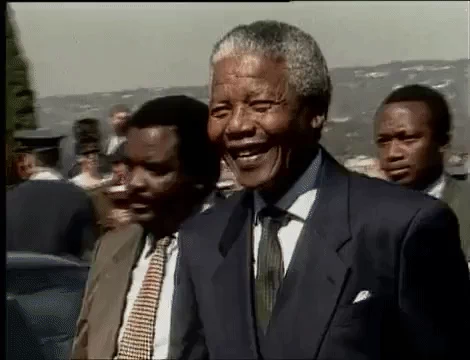
“[T]hese terrible and terrifying weapons of mass destruction — why do they need them anyway? In reality, no rational answer can be advanced to explain in a satisfactory manner what, in the end, is the consequence of Cold War inertia and an attachment to the use of the threat of brute force to assert the primacy of some States over others.
— Nelson Mandela, 1998

Make no mistake: as long as these weapons exist, the United States will maintain a safe, secure and effective arsenal to deter any adversary, and guarantee that defense to our allies.
— Barack Obama, 2009
Nuclear weapons are, indeed, powerful weapons. They inspire fear, dread, and concern.
A Eurasia Group Foundation survey of American voters in 2022 found that nuclear weapons are worrisome to most.
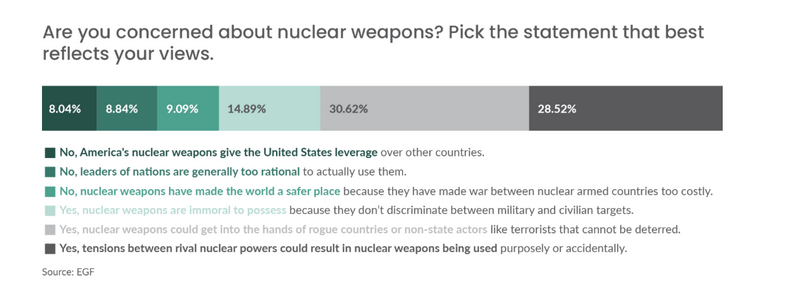 Yet, it looks like these weapons will be around for a while.
Yet, it looks like these weapons will be around for a while.
So what to do?
Though only nine countries have nuclear weapons, these weapons are a global issue.
Since the dawn of the atomic age, leaders, thinkers, policymakers, generals, scientists, and citizens worldwide have grappled with the complex problem of controlling and managing nuclear weapons. Check out this conversation with Professor David Arceneaux, an expert on nuclear weapons, if you want to learn more.
Though most would agree that nuclear weapons should be handled responsibly, reasonable people can arrive at different conclusions on how to approach them.
It may not seem like much, but one thing we all can do is calmly think about these weapons to decide for ourselves how we want our future to look.
Here are a few questions to help you get started:
Your feedback matters to us.
This Byte helped me better understand the topic.

